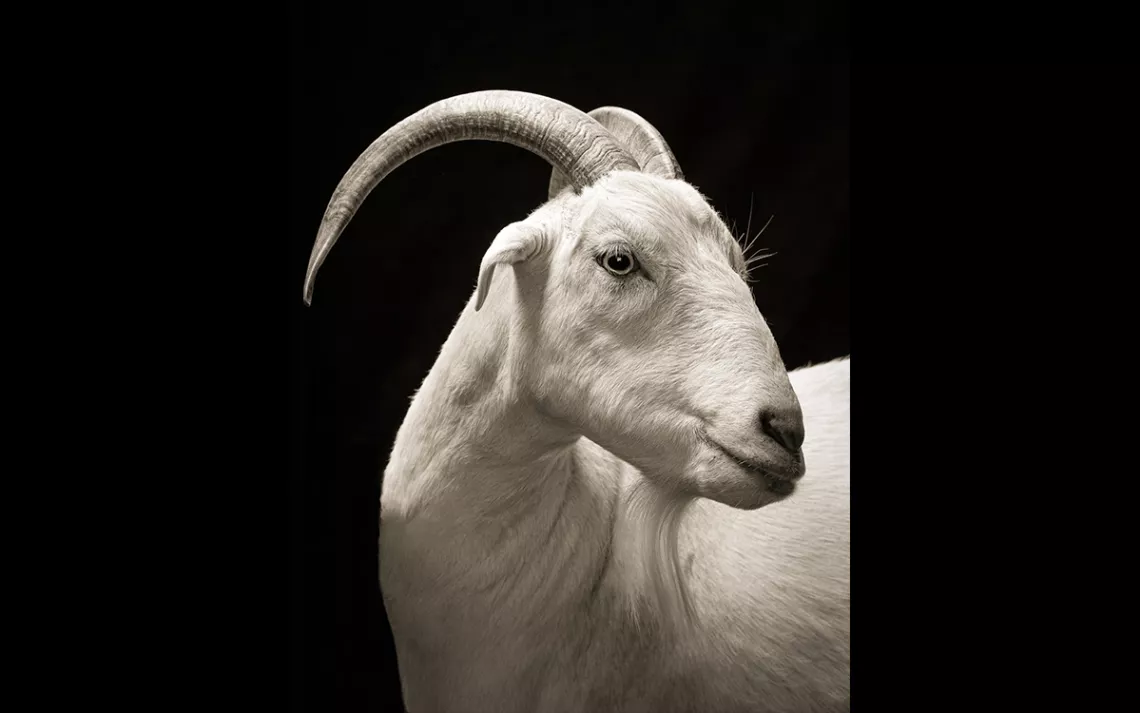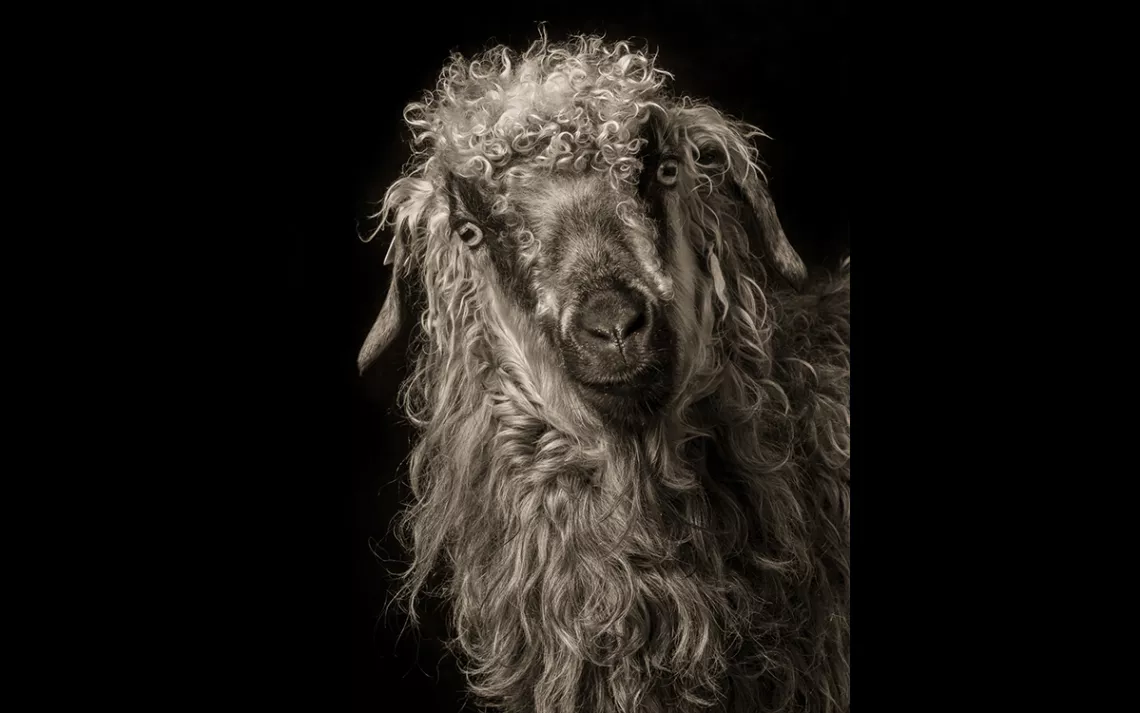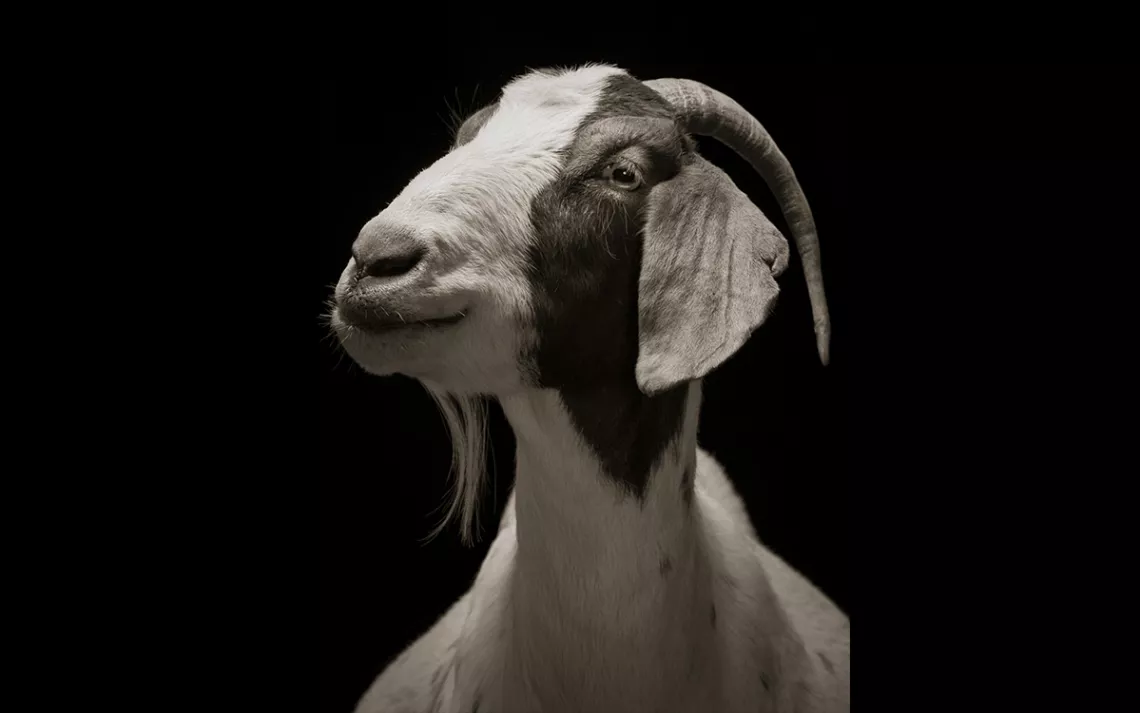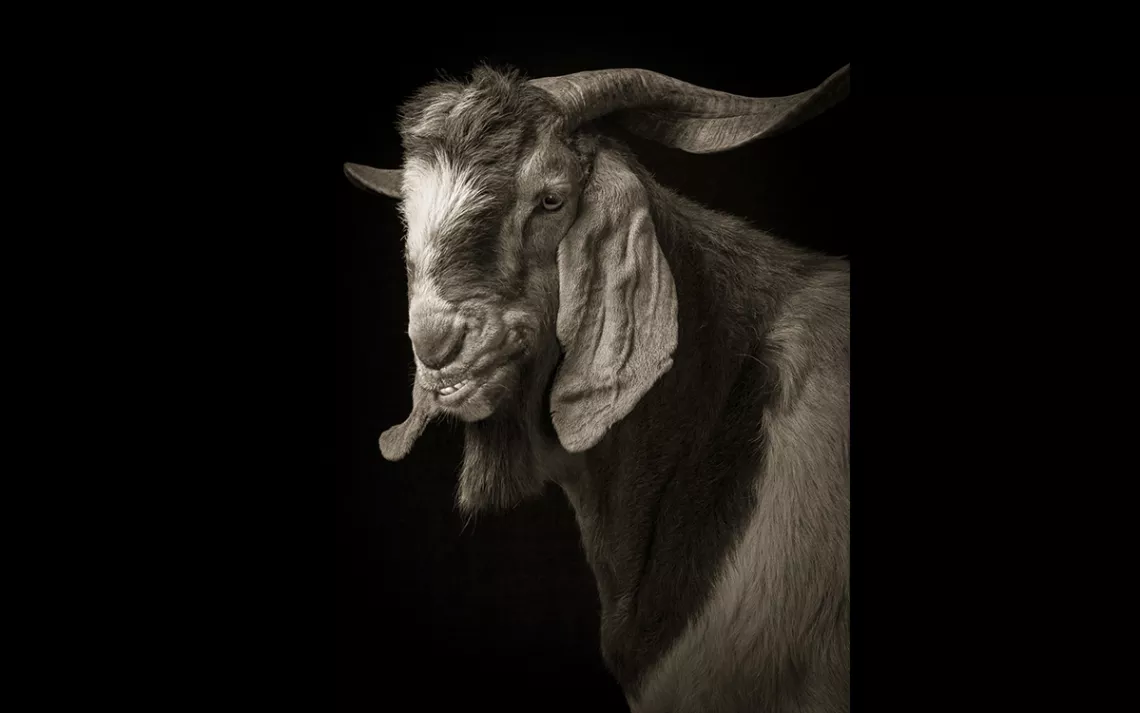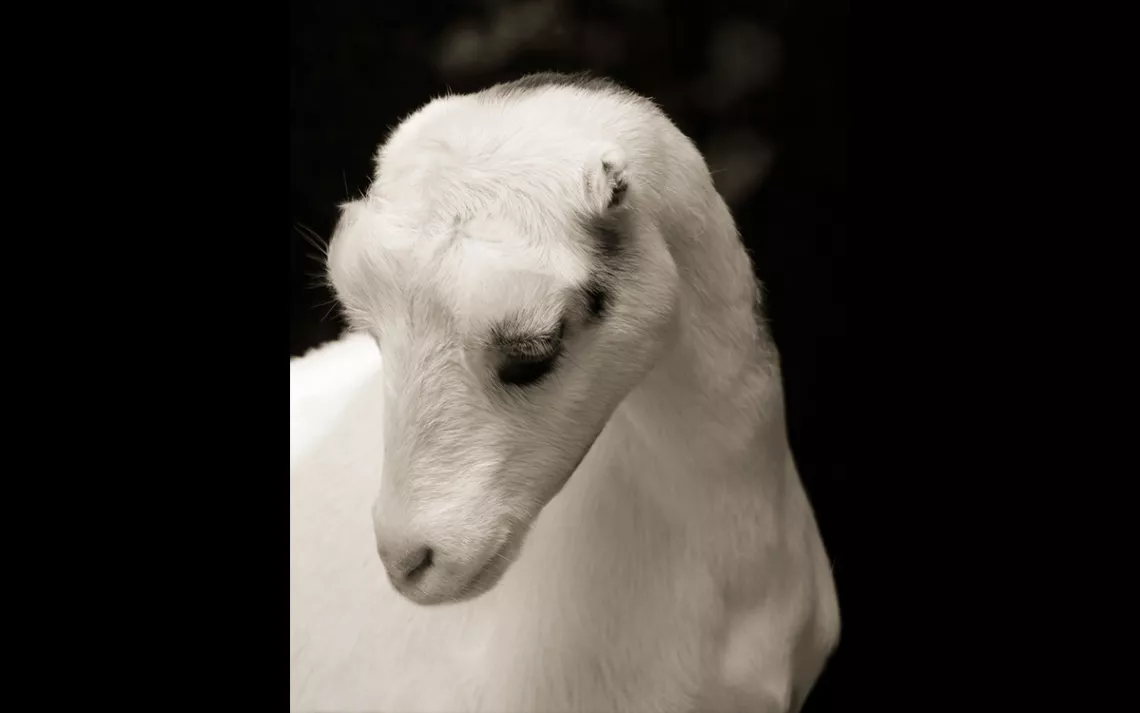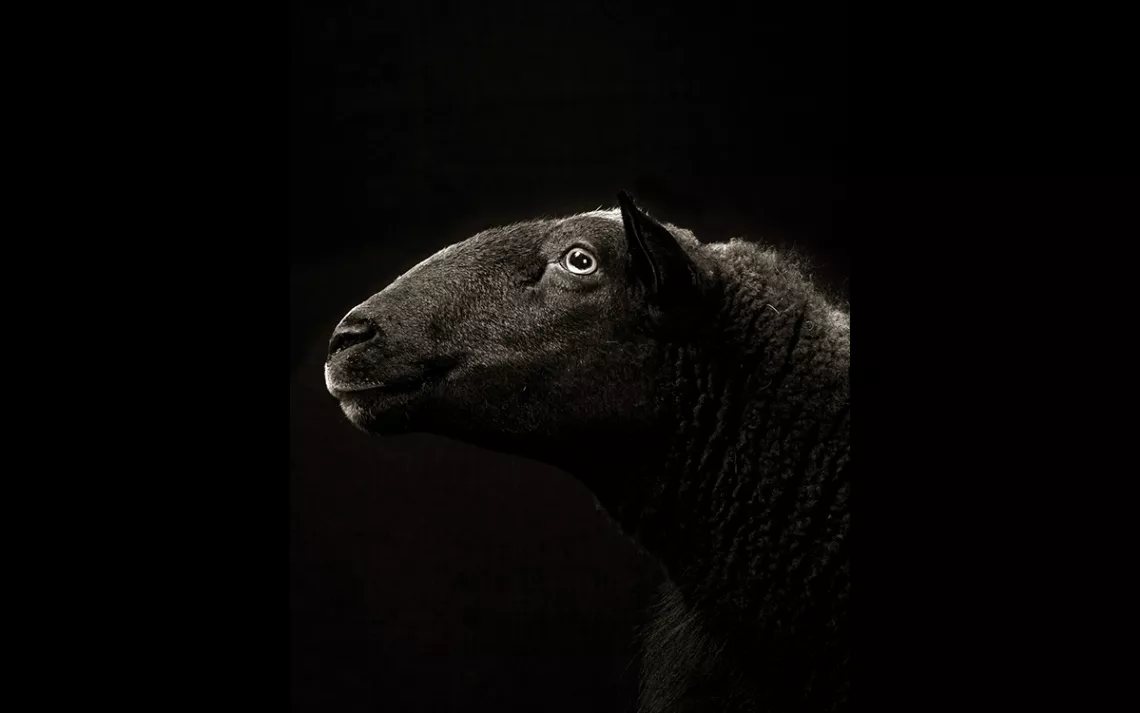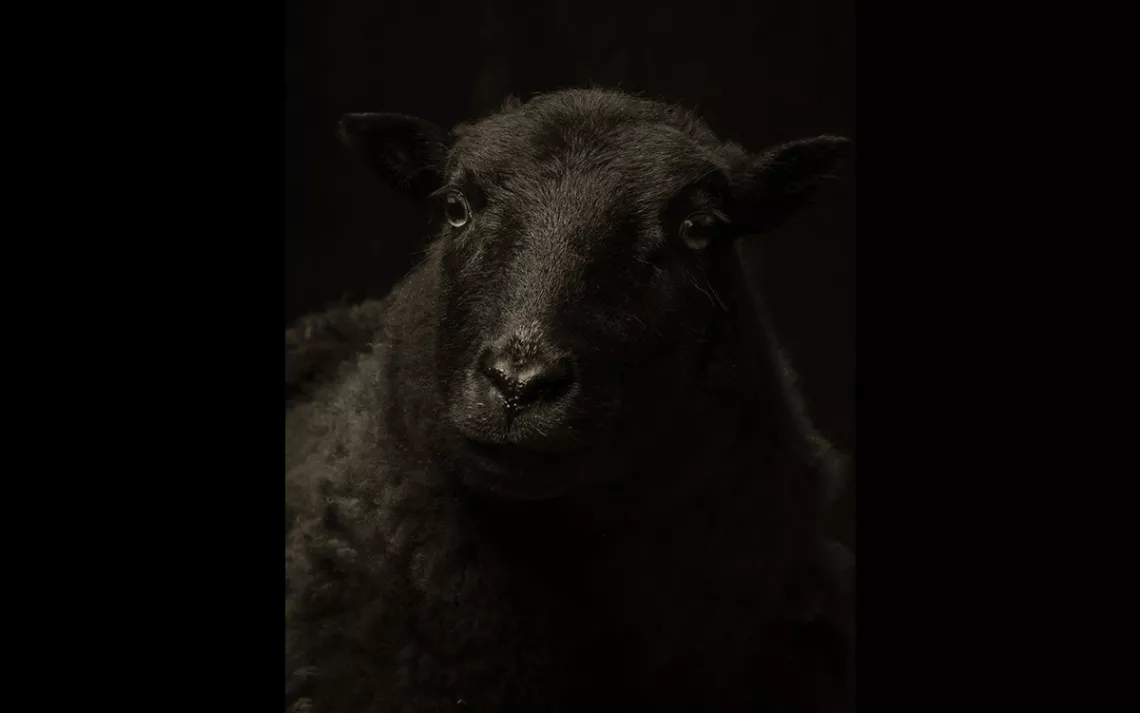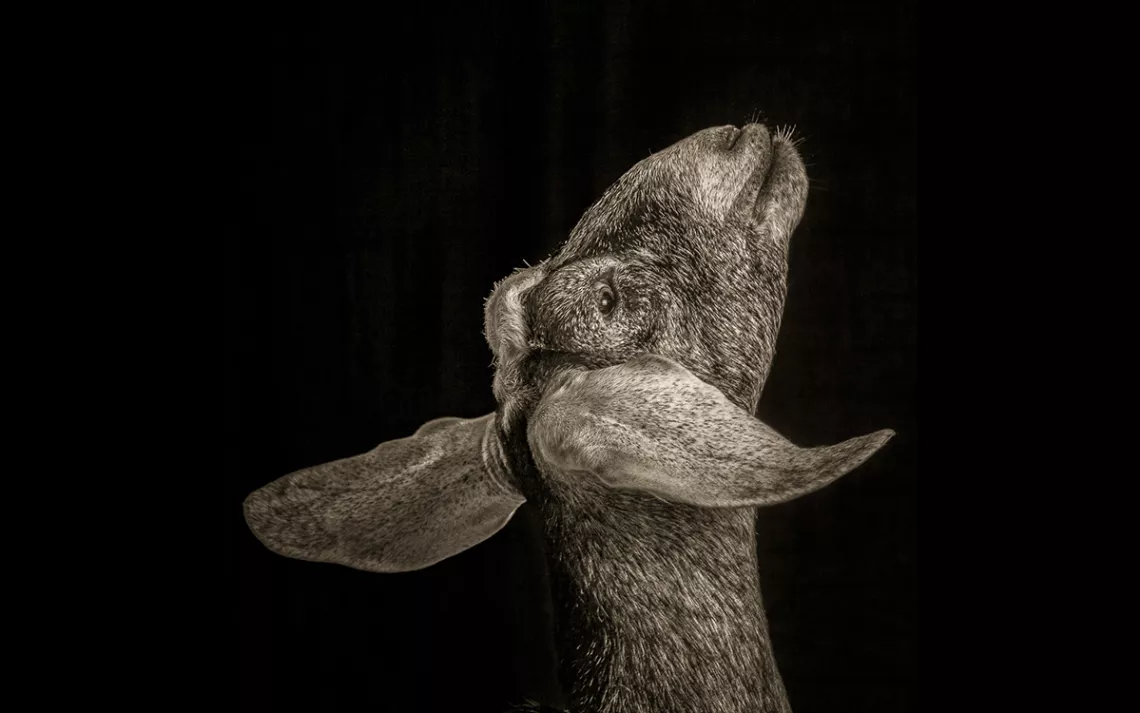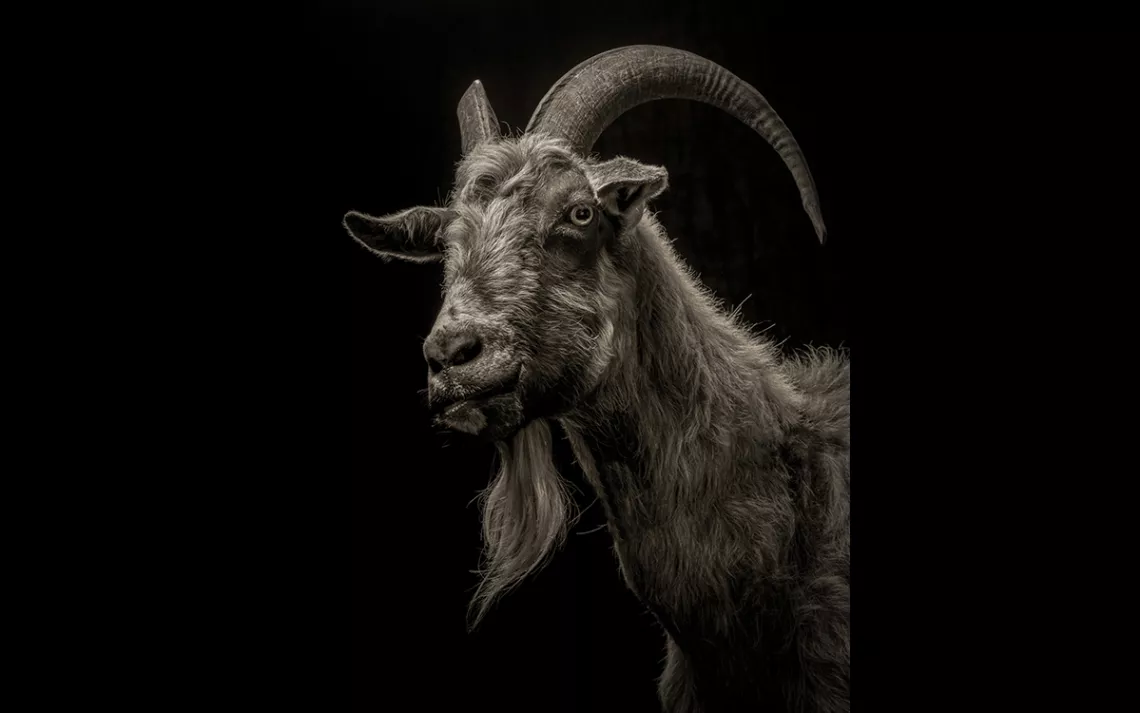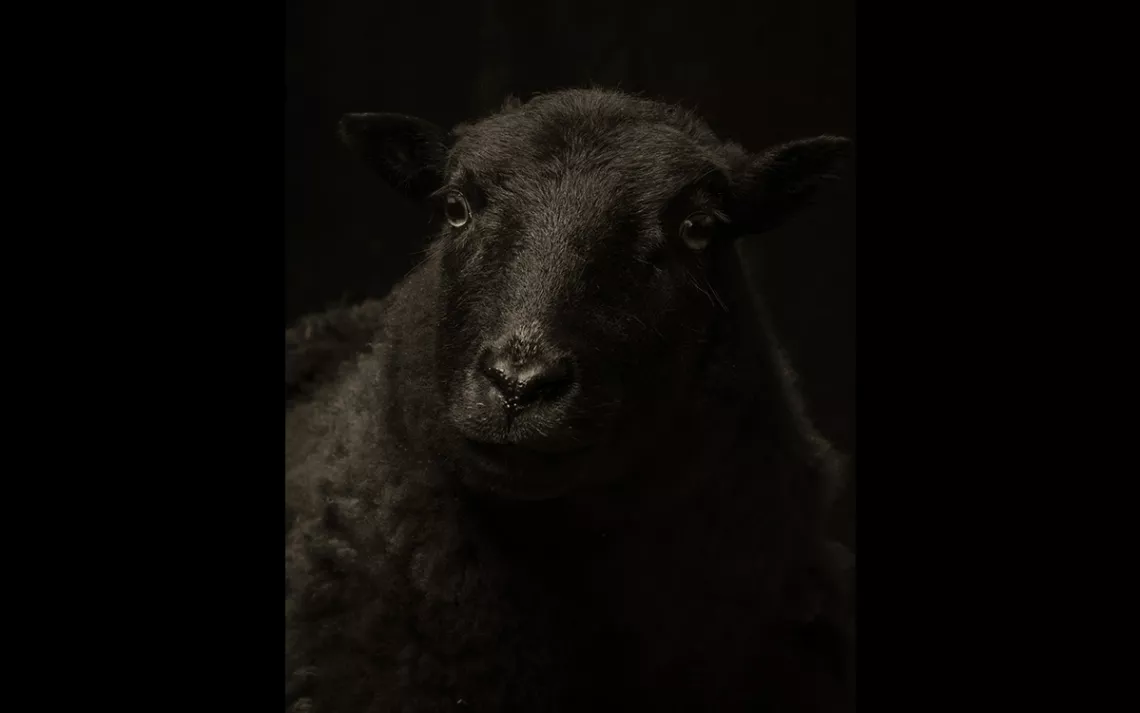Goats Are People Too
Kevin Horan’s portrait subjects are funny and sweet, and have horizontal pupils
Photos by Kevin Horan
Photos by Kevin Horan
Bella tilts her head just slightly, eyes curious and not a hair out of place. Lily shies away from the camera. Mr. Beasley goads it. And Jake looks contemptuously down at us all. These are just some of the motley crew that populate Kevin Horan’s new book, Goats and Sheep: a portraiture collection of the “venerable aristocrats” he met on farms and at fairs near his new home. The photographs are part of Horan’s ongoing project to “look at animals as people, people as animals, and the planet as a very small place.”
Horan lived and worked as a photojournalist in Chicago before moving to Whidbey Island, in rural Washington. There, he encountered an entirely different type of neighbor—a herd of sheep—all of which struck him as having the appearance of aristocratic gentlemen and ladies mingling on a lazy afternoon. The idea struck him that these seemingly regal animals would look great as subjects of studio portraits. Soon he was visiting goat rescue farms, fairgrounds, hobby farms, dairies, and even homes.
“I'd have to say it began as a kind of photographic joke, where we would take simple farm animals and wrap all the business of portrait photography around them and create this punchline,” Horan tells Sierra.
But the more he looked at the pictures and into the eyes of the animals, the more he realized that there was a depth and intelligence there. “It may not be something we can necessarily understand; in fact we absolutely cannot understand what it's like to be someone else,” Horan says. “So it evolved and became more about using the pictures to imagine what's going on inside that mind.”
The series was as much an exercise in patience as precision. Taking the studio to the goats and sheep meant setting up equipment and lights in sheds and barns, and protecting it from rain and excessive sun.
“We would try to entice them with . . . like with shooting babies . . . with a funny sound or treats,” Horan says. “So sometimes it was very quick, and other times we would get nothing.”
Horan set up the lighting in such a way that each animal’s head had to be in a “sweet spot”—a little circle where he could get the best shot. Sometimes the goats and sheep were led through the area a number of times. “It would either work, or sometimes never work,” Horan admits with a laugh, “and the ones that never worked, we don't see in the book.”
One of Horan’s first portraits was of Xenia, a goat he met at a cheese dairy not far from his home. At the Island County Fair, he met Bella, “powdered and primped,” getting ready to be shown. Sassy came to his photo booth at the local fairgrounds and remained true to name.
Jake was the “grand old man” of the group—a Boer goat who weighed several hundred pounds and lived on the New Moon Farm rescue and sanctuary. One day at the farm, Horan looked over his shoulder and saw Jake nosing his way under a fence. “He was just going to go out in the neighborhood and walk around and then come back when he was good and ready. That was just Jake's way,” Horan says.
Horan met Sydney, a grand Cashmere goat, at New Moon Farm too. Horan had picked out the “fabulous” goat just as the animal was being loaded into the back of his new owner’s station wagon—a woman who had just adopted him. “She was driving two hours away, but I was eventually able to go down to her hobby farm because I had to have Sydney in the collection,” Horan says. The regal goat now adorns the back of the book.
Is Horan anthropomorphizing the animals? Maybe, but even so, he doesn’t think that’s a bad thing. Science, he says, is catching up to the reality of animal intelligence. “We forget that commingling the stories of people and animals as fellow players was always central to our sense of ourselves,” he says.
This is his way of honoring, of paying attention to “the musings of the sheep and the jests of the goats.” While the images are all a kind of fiction, lit up and staged, Horan hopes that his reader will experience a story in every one, and bridge the gap between the posturing of it all to what is inside the mind. “The subject presents; the artist interprets; the viewer completes,” he says. “You the viewer, create a personage out of a two-dimensional image.”
Horan chose to not include captions with his photographs, other than identifying the animals by name, for this very reason: so that his readers are free to let their minds wander around the story on the page. “People inevitably connect them to someone they know—immediately make almost human personalities out of them,” Horan says.
But he wants us to take that next step and consider his subjects on their own terms. “I'm using photography to push you into that place where you consider, 'What am I looking at? Am I making up personality? Or am I really seeing something that's in there?'”
 The Magazine of The Sierra Club
The Magazine of The Sierra Club
